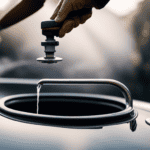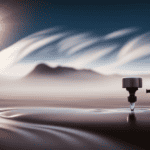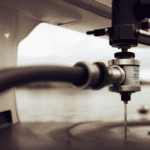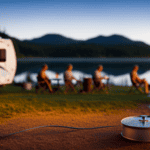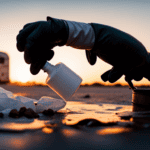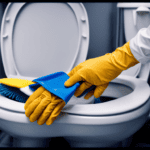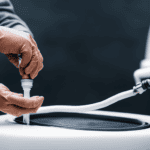Beginners Guides
How To Clean Camper Water Tank

Cleaning your RV water tank is akin to providing your vehicle with a revitalizing bath following an extended trip through grime and dust. As someone who is passionate about camping, I grasp the significance of maintaining clean and potable water for use in cooking, drinking, and sanitation. Failing to regularly clean your water tank can result in undesirable smells, the proliferation of bacteria, and potential health hazards.
In this comprehensive guide, I will walk you through the step-by-step process of effectively cleaning your camper water tank. With just a few supplies and a little elbow grease, you’ll be able to maintain a pristine water system for all your camping adventures. From draining and scrubbing the tank to rinsing and testing the water, I’ll cover it all.
So, let’s dive in and ensure that your camper water tank is as clean as can be, providing you with fresh water for a worry-free camping experience.
Key Takeaways
- Cleaning the camper water tank is crucial for maintaining clean and safe water for cooking, drinking, and cleaning.
- Neglecting to clean the water tank can lead to unpleasant odors, bacteria growth, and health risks.
- It is important to drain and refill the tank regularly to prevent stagnant water and maintain cleanliness.
- Using a water filtration system designed for RVs and regularly replacing filters can help remove bacteria and contaminants from the water.
Gather the necessary supplies
Before starting the cleaning process, make sure you’ve gathered all the necessary supplies. Supplies needed include bleach, a bucket, a hose, and a scrub brush. Having these items on hand will make the cleaning process much easier and more efficient.
Now that you have all the supplies ready, let’s go over the steps to follow. First, turn off the water supply to the camper and ensure that the water tank is empty. This is important to avoid any accidents or spills during the cleaning process.
Next, mix a solution of water and bleach. The recommended ratio is 1/4 cup of bleach for every 15 gallons of water in the tank. Use the scrub brush to thoroughly clean the inside of the water tank, making sure to reach all the corners and crevices.
After scrubbing, let the bleach solution sit in the tank for at least 30 minutes to effectively disinfect it. Once the time is up, drain the water tank using the hose, making sure to remove all the bleach solution.
With the water tank now clean and empty, you can move on to the next step: draining the water tank.
Drain the water tank
To start, it’s important to note that approximately 70% of the tank’s capacity can be drained in just a few minutes. Proper drainage is crucial for effective water tank maintenance.
There are several drainage methods you can choose from, depending on the design of your camper water tank. One common method is to open the drain valve located at the bottom of the tank. This allows gravity to do its job and empty the majority of the water. Another option is to use a pump or siphon to remove the water from the tank. This may be necessary if the drain valve is not easily accessible or if there is limited space for water to flow out freely.
Whichever method you choose, make sure to take the necessary precautions to prevent water from spilling and causing a mess.
Once the water tank is drained, you can move on to the next step and prepare a cleaning solution.
Now that the water tank is drained, it’s time to prepare a cleaning solution.
Prepare a cleaning solution
Once you’ve drained the tank, it’s time for you to whip up a solution for a sparkling clean. Cleaning the camper water tank is an important process to maintain the quality of your water.
To prepare a cleaning solution, follow these steps:
- First, gather the necessary materials: a bucket, bleach or vinegar, and water.
- For a bleach solution, mix ¼ cup of bleach with every 15 gallons of water in the tank. Use a funnel to pour the solution into the tank.
- For a vinegar solution, mix 1 cup of vinegar with every 5 gallons of water in the tank. Again, use a funnel to pour the solution into the tank.
- Once the solution is in the tank, fill it up completely with fresh water.
- Let the solution sit in the tank for at least 12 hours. This will allow it to thoroughly clean and disinfect the tank.
- After the designated time, drain the tank again, making sure to flush out all the cleaning solution.
Before starting the cleaning process, remember to take safety precautions. Use gloves and goggles to protect your skin and eyes from any chemicals. Also, ensure proper ventilation in the area where you’re working.
Now that the tank is empty and clean, it’s time to move on to the next step: scrubbing the inside of the tank.
Scrub the inside of the tank
Now that the tank’s sparkling and fresh, it’s time to roll up my sleeves and give the inside of the tank a thorough scrubbing. Cleaning the inside of the camper water tank is crucial to ensure its proper functioning and prevent contamination.
To effectively clean the tank, I’ll use various cleaning techniques to remove any buildup, residue, or bacteria that may be lurking inside. First, I’ll prepare a cleaning solution by mixing warm water with a mild detergent or bleach. This solution will help break down any grime or stubborn stains.
Using a long-handled brush, I’ll scrub the entire interior of the tank, paying extra attention to corners and hard-to-reach areas. This will ensure that all surfaces are thoroughly cleaned and no contaminants are left behind. During the scrubbing process, it’s important to be thorough and meticulous. I’ll scrub the walls, bottom, and even the lid of the tank to eliminate any potential sources of contamination. By using circular motions and applying gentle pressure, I can effectively remove any dirt or residue.
Once the inside of the tank has been scrubbed clean, it’s time to move on to the next step: rinsing the tank thoroughly. This step is crucial to remove any leftover cleaning solution and ensure that the tank is ready for use.
Rinse the tank thoroughly
Make sure you thoroughly rinse the tank to remove any residual cleaning solution, as this step is essential for ensuring the safety of your water supply. Did you know that according to a study, inadequate rinsing of water tanks can lead to bacterial contamination in up to 80% of cases?
After scrubbing the inside of the tank, it’s crucial to rinse it thoroughly to eliminate any remaining dirt, debris, or cleaning agents. Thorough cleaning and effective rinsing are key to maintaining a clean and safe water tank for your camper.
To achieve a thorough rinse, start by filling the tank with clean water. Allow the water to circulate throughout the tank, ensuring it reaches every corner and surface. Then, drain the water completely, making sure there’s no residue left behind. Repeat this process at least two to three times to ensure all contaminants are removed.
By thoroughly rinsing the tank, you eliminate any potential health hazards that may arise from leftover cleaning agents or contaminants. Once the tank’s rinsed, you can proceed to the next step of sanitizing the tank with a bleach solution. This’ll further ensure the cleanliness and safety of your camper’s water supply.
Sanitize the tank with a bleach solution
Ensure the safety of your water supply by sanitizing your tank with a powerful bleach solution that will eliminate any harmful bacteria lurking inside. Before starting the sanitization process, make sure to rinse the tank thoroughly to remove any debris or sediment. Once the tank is clean, it’s time to sanitize it using a bleach solution.
To create a bleach solution, mix 1/4 cup of bleach for every 15 gallons of water in a container. Carefully pour the solution into the tank, making sure it reaches all areas. Let the solution sit in the tank for at least four hours, allowing it to effectively kill any bacteria. During this time, it is important to keep the tank closed and avoid using any water from it.
While bleach is a commonly used sanitization method, there are alternative options available. Some people prefer using hydrogen peroxide or vinegar as a natural alternative to bleach. However, it is important to note that these alternatives may not be as effective in killing bacteria.
Using a bleach solution does come with some potential risks. Bleach can be corrosive, so it is crucial to use the correct amount and properly dilute it. Additionally, if not rinsed thoroughly, bleach residue can be harmful when ingested. Therefore, it is important to flush the tank with clean water after sanitization to remove any traces of bleach before using the water for drinking or cooking purposes.
In the next section, we will discuss how to flush the tank with clean water to ensure a fresh and safe water supply.
Flush the tank with clean water
To complete the process, you’ll want to give the tank a thorough rinse with fresh water, ensuring that it’s free from any remaining residue or contaminants.
After sanitizing the tank with a bleach solution, flushing it with clean water is an essential step in maintaining a safe and clean water supply for your camper.
Start by filling the tank with fresh water, making sure to open all the faucets and drain any remaining bleach solution. This’ll help remove any traces of bleach and eliminate any lingering odors.
Next, turn on the water pump and let the clean water run through all the faucets, including the hot water taps, for a few minutes. This’ll help flush out any remaining bleach solution from the pipes and ensure that the entire system is clean.
It’s important to remember that regular flushing of the tank with clean water is crucial in preventing bacterial growth and maintaining the quality of your water supply. By removing any potential contaminants and residue, you can ensure that your camper’s water system remains safe and free from harmful bacteria.
In the next section, we’ll discuss how to test the water for cleanliness, ensuring that your camper’s water supply is ready for use.
Test the water for cleanliness
After flushing the tank with clean water, you’ll want to see if the water is safe by testing it for cleanliness. Checking the water quality is an important step to ensure the health and safety of everyone using the camper. Clean water is essential for drinking, cooking, and maintaining hygiene while on the road. To test the water, you can use a water testing kit specifically designed for RV water systems. This kit will help you determine if the water is free from harmful bacteria, contaminants, or any other impurities. It is crucial to regularly check the water quality, especially before embarking on a trip or after the camper has been sitting unused for a while. Remember, the cleanliness of the water directly affects your well-being and overall camping experience.
Moving on to maintaining the cleanliness of the tank, it is important to follow a regular cleaning schedule and take preventive measures to keep the water in the tank clean and safe.
Maintain the cleanliness of the tank
Now, you may be thinking, ‘Who needs a sparkling tank anyway? Let’s just let the bacteria throw a wild party in there!’ But trust me, my friend, neglecting the maintenance of your tank can lead to some seriously unpleasant surprises down the road.
So, let’s talk about ways to prevent bacteria growth and the importance of regular tank cleaning.
To maintain the cleanliness of your camper water tank, there are a few steps you can take. Firstly, make sure to sanitize the tank regularly. This can be done by using a mixture of bleach and water. Simply add a quarter cup of bleach for every 15 gallons of water in your tank, then fill it up and let it sit for at least one hour. After that, drain the tank completely and flush it with clean water.
In addition to sanitizing, it’s crucial to keep your tank clean by regularly flushing it out. This means draining and refilling the tank every few weeks, especially if you’re not using it frequently. By doing so, you’ll prevent stagnant water and reduce the risk of bacterial growth.
By following these maintenance steps, you can ensure that your camper water tank remains clean and bacteria-free. So, take the time to keep it in top condition and enjoy clean and safe water on your camping trips!
Enjoy clean and safe water on your camping trips!
So you think drinking from a stagnant pool of mystery liquid in the middle of nowhere sounds like a great idea, huh? Well, my friend, let’s talk about how to actually enjoy clean and safe water on your camping trips without risking a bacterial invasion.
Maintaining water quality and preventing bacterial growth in your camper’s water tank is essential for a worry-free outdoor adventure. To start, it’s crucial to regularly clean and sanitize your camper’s water tank. Before each trip, make sure to drain any remaining water from the tank and remove any debris or sediment. Then, prepare a mixture of bleach and water and pour it into the tank. Let it sit for a few hours, ensuring that the solution reaches all corners of the tank. Afterward, thoroughly rinse the tank with clean water to remove any traces of bleach.
Additionally, consider investing in a water filtration system specifically designed for RVs. These systems can effectively remove bacteria, viruses, and other contaminants, ensuring that the water you consume is safe and clean. Remember to replace the filters regularly to maintain their effectiveness.
Lastly, practice good water management habits while camping. Avoid filling your tank with untreated water from unknown sources, as it may contain harmful bacteria. Instead, opt for commercially bottled water or use a reliable water purification method.
By maintaining water quality and preventing bacterial growth, you can have peace of mind and enjoy clean and safe water on your camping trips. Don’t compromise your health and well-being, take the necessary steps to ensure your water is always pristine.
Frequently Asked Questions
How often should I clean my camper water tank?
I recommend sanitizing your camper water tank at least once every three months to maintain optimal cleanliness and water quality. Following best practices for cleaning the tank is essential in preventing the growth of harmful bacteria and maintaining the overall hygiene of the system. Regular cleaning ensures that you and your family have access to safe, clean water during your camping adventures.
Can I use a homemade cleaning solution instead of buying one?
Yes, you can use a homemade cleaning solution as an alternative to buying one for cleaning your camper water tank. There are pros and cons to using homemade cleaning solutions.
On the positive side, homemade solutions are often cheaper and can be made with common household ingredients. However, it’s important to note that homemade solutions may not be as effective as commercially available ones. Additionally, using the wrong ingredients or proportions could potentially damage your water tank or leave behind residue.
Is it safe to use dish soap to clean the inside of the tank?
Using dish soap to clean the inside of a camper water tank is not recommended. While dish soap may remove some dirt and grime, it isn’t designed to effectively sanitize the tank or remove bacteria. Instead, I suggest using a cleaning solution specifically formulated for water tanks or a vinegar and water mixture. These alternatives are better at killing bacteria and ensuring a clean, safe water supply.
It’s important to prioritize the best cleaning methods for a camper water tank to maintain optimal hygiene.
What should I do if I notice a foul smell coming from the tank after cleaning?
To remove a foul odor from your camper water tank, there are a few steps you can take. First, flush the tank with a mixture of white vinegar and water, allowing it to sit for a few hours before draining.
Then, rinse the tank thoroughly with clean water. If the odor persists, you may need to repeat this process or consider using a specialized tank cleaner.
To prevent future foul smells, regularly clean and sanitize your tank, and ensure it’s properly sealed to prevent contamination.
Are there any specific maintenance steps I should follow to keep the tank clean between trips?
To keep the camper water tank clean between trips, it’s crucial to follow specific maintenance steps. Regularly sanitize the tank using a bleach solution or specialized tank cleaner. Flush the tank with clean water before each trip to remove any contaminants.
Additionally, consider installing a water filter system to prevent bacterial growth. These maintenance practices will help ensure a clean and safe water supply for your camper adventures.
Can Cleaning the Water Tank Help Prevent the Need to Change Water Pipes in a Camper?
Cleaning the water tank regularly is crucial in preventing the need for changing water pipes in a camper. By removing sediments and bacteria that accumulate over time, the tank remains clean, reducing the risk of corrosion and pipe blockages. Proper maintenance ensures the water flows smoothly, prolonging the lifespan of the pipes in a camper.
Conclusion
In conclusion, cleaning your camper water tank is an essential task to ensure clean and safe water during your camping adventures. By following the steps outlined in this article, you can easily maintain the cleanliness of your tank.
Remember to gather the necessary supplies, drain and scrub the tank, and rinse it thoroughly. Once you’ve tested the water for cleanliness, you can enjoy peace of mind knowing that your water is free from any contaminants.
So, don’t delay, grab your cleaning supplies and get ready to embark on a journey of clean and refreshing water in your camper!
Jason is the author of Laienhaft, a blog for all things outdoor and camping. If you’re looking for the best tent to take on your next camping trip, or need some advice on how to get started with recreational camping, Jason has you covered. He’s also an expert on survival skills – if you’re ever lost in the wilderness, he’s the guy you want to find!
Beginners Guides
How To Paint A Camper Exterior
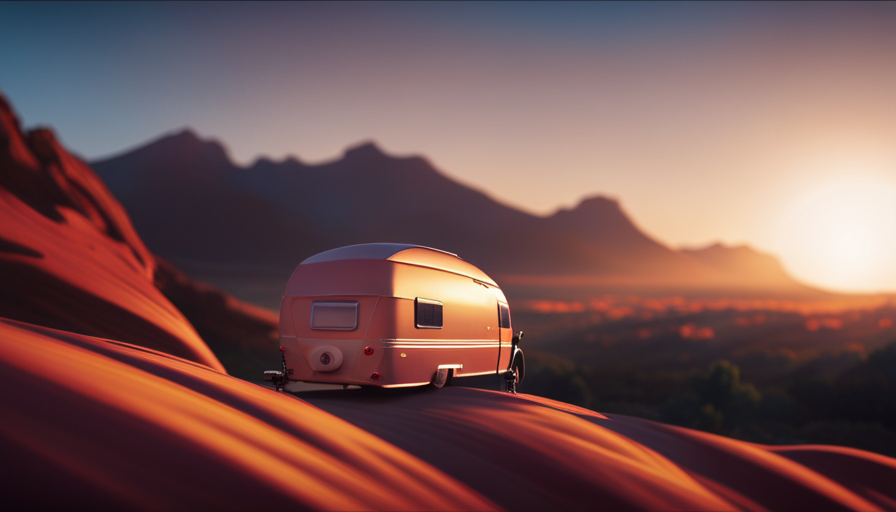
Have you ever fantasized about going on a cross-country journey in a camper that reflects your individuality? I’m here to let you know that with some knowledge and effort, you can turn the outside of your camper into a masterpiece on wheels.
In this article, I will guide you through the step-by-step process of painting a camper exterior, sharing my firsthand knowledge and expertise to help you achieve the stunning results you desire.
Before you dive into the world of camper painting, it’s important to assess the condition of your vehicle and choose the right paint and supplies for the job. Once you’ve gathered all the necessary materials, we’ll move on to removing and protecting any exterior accessories, prepping the surface, and applying a primer.
Then, it’s time to let your creativity shine as we add those special touches that will make your camper truly one-of-a-kind. Finally, we’ll finish off with a protective top coat and reattach those accessories, leaving you with a beautifully revamped camper ready for your next adventure.
So, let’s get started and turn your camper into a mobile masterpiece!
Key Takeaways
- Assess the condition of the camper before painting and make any necessary repairs
- Choose the right paint and supplies for the job, considering the type of paint suitable for the camper’s exterior material
- Use high-quality primer and paint for better adhesion and durability
- Properly prepare the surface by sanding, filling cracks or holes, and applying a suitable primer before painting
Assess the Condition of Your Camper
You need to take a close look at your camper to see if there are any areas that need repairs before you start painting it. Assessing the damage is crucial to ensure a smooth and successful painting process.
Start by inspecting the exterior for any cracks, dents, or scratches. These imperfections can be easily fixed with some basic repairs. If you notice any damaged fiberglass, it’s essential to repair it before painting. Fiberglass repair kits are readily available and can be used to fix any cracks or holes. Make sure to follow the manufacturer’s instructions for a proper repair.
Once you have assessed the condition of your camper and made any necessary repairs, it’s time to choose the right paint and supplies. This step is crucial as it will determine the longevity and appearance of the paint job. Consider the type of paint that’s suitable for the camper’s exterior material, whether it’s fiberglass, aluminum, or steel. Additionally, opt for a high-quality primer and paint that’s specifically designed for outdoor use. These products will provide better adhesion and durability.
Assessing the condition of your camper and repairing any damages are essential steps before starting the painting process. Once these tasks are completed, you can move on to choosing the right paint and supplies for a successful camper exterior makeover.
Choose the Right Paint and Supplies
Selecting the appropriate paint and necessary materials is like finding the perfect brushstroke for your mobile oasis.
When it comes to choosing the right paint color for your camper’s exterior, there are a few things to consider. First, think about the overall aesthetic you want to achieve. Do you prefer a bold and vibrant look or a more subtle and understated one? Once you have a vision in mind, head to your local paint store and browse through their selection. Don’t be afraid to ask for samples to test on a small area of your camper to see how the color looks in different lighting conditions.
Tips for painting in different weather conditions are also important to keep in mind. If you’re painting on a hot and sunny day, make sure to work in the shade to avoid the paint drying too quickly. On the other hand, if you’re painting in cooler temperatures, consider using a paint that’s specifically designed for colder weather.
Incorporate these tips into your paint selection process, and you’ll be well on your way to transforming your camper’s exterior.
Now, let’s move on to the next step of the process: removing and protecting exterior accessories.
Remove and Protect Exterior Accessories
When it’s time to transform my mobile oasis, I always take a moment to remove and safeguard the exterior accessories. This step is crucial in ensuring that the painting process goes smoothly and that all delicate areas are protected.
I start by carefully removing any detachable accessories such as awnings, vents, and light fixtures. These items can easily be damaged by overspray or accidental paint drips, so it’s essential to set them aside in a safe place.
Next, I cover any remaining accessories that can’t be removed with protective materials such as plastic sheets or masking tape. This prevents them from getting damaged or covered in paint during the painting process. I pay extra attention to delicate areas such as windows, door handles, and decals, making sure they’re well-protected.
Protecting these delicate areas and preventing overspray is crucial to achieving a professional-looking paint job. Once all the exterior accessories are removed or covered, I can move on to the next step: prepping the surface. By ensuring that everything’s properly protected, I can focus on getting the camper’s exterior ready for a fresh coat of paint.
Prep the Surface
Before painting the camper exterior, it’s crucial to properly prepare the surface. I start by sanding down any rough areas or old paint to create a smooth and even surface.
Next, I carefully inspect for any cracks or holes, and if I find any, I fill them in with putty or filler to ensure a seamless finish.
Taking the time to prep the surface thoroughly will guarantee a professional-looking paint job that lasts for years to come.
Sand down any rough areas or old paint
Smoothly sand any rough areas or remove old paint to prepare the camper for a fresh coat of color. When repairing dents, it is important to first assess the severity of the damage. For small dents, a lighter grit sandpaper, such as 120-grit, is recommended. This will allow for a smoother finish without causing further damage to the surface. For larger dents, a coarser grit, like 80-grit, may be necessary to effectively reshape the area. Always remember to sand in a circular motion, gradually blending the sanded area with the surrounding surface. Once the rough areas are sanded down, wipe away any dust and debris before moving on to the next step. Now that the surface is smooth and free of imperfections, it’s time to fill in any cracks or holes with putty or filler.
Fill in any cracks or holes with putty or filler
After sanding down any rough areas or old paint on the camper exterior, the next step is to fill in any cracks or holes with putty or filler. This is an important step to ensure a smooth and even surface for painting.
When it comes to applying putty or filler, proper techniques are essential. Start by cleaning the area thoroughly and then apply the putty or filler using a putty knife or a flexible plastic spreader. Make sure to follow the manufacturer’s instructions for drying time and sanding.
There are various options available for filling cracks and holes in a camper. Some popular choices include epoxy putty, which is durable and resistant to water, and auto body filler, which is easy to shape and sand. It’s important to choose a putty or filler that’s specifically designed for outdoor use and can withstand the elements.
With the cracks and holes filled, the next step is to prime the camper, creating a solid foundation for the paint to adhere to.
Prime the Camper
First, you’ll need to grab your primer and get ready to transform your camper into a stunning work of art. Choosing the right primer is essential to ensure a long-lasting and professional-looking paint job. Look for a primer specifically designed for exterior surfaces, as it’ll provide the best adhesion and durability. Additionally, consider the type of paint you’ll be using and choose a primer that’s compatible with it.
Before applying the primer, make sure the surface is clean and free of any dirt, grease, or loose paint. Use a mild detergent and water to wash the camper thoroughly, and then allow it to dry completely.
Once the surface is clean and dry, you can start applying the primer.
Tips for a smooth primer application include using a high-quality brush or roller to ensure even coverage. Work in small sections, applying the primer with long, smooth strokes. Avoid applying too much pressure, as it can lead to streaks or unevenness. Allow the primer to dry completely before moving on to the next step.
Now that the camper is primed and ready, it’s time to start painting.
Start Painting
Get ready to unleash your creativity and bring your camper to life with a fresh burst of color. The next step in painting your camper exterior is to start painting. Before you begin, make sure you’ve chosen the perfect paint color for your camper. Consider the overall look you want to achieve and select a color that complements your style.
Once you have your paint color, it’s time to get started. To achieve a smooth finish, it’s important to use the right techniques. Start by applying a thin and even coat of paint using a high-quality paintbrush or roller. Work in small sections to ensure that the paint is applied evenly and doesn’t dry before you can blend the edges. If you notice any drips or uneven areas, gently sand them down and apply another coat of paint. Repeat this process until you achieve the desired coverage and smoothness.
Now that you’ve learned the techniques for achieving a smooth finish, it’s time to move on to adding creative touches to your camper.
Add Creative Touches
Now it’s time to let your imagination run wild and add those special artistic details to make your camper truly unique. When it comes to adding creative touches to your camper’s exterior, unique color choices are a great way to make a statement. Consider bold and vibrant colors that reflect your personality and style. Whether you opt for a sleek metallic finish or a playful combination of hues, the choice is yours.
In addition to unique color choices, adding decals or stencils can take your camper’s exterior to the next level. You can find a wide range of pre-made decals and stencils that cater to different themes and designs. From nature-inspired motifs to geometric patterns, there’s something for everyone. If you’re feeling extra creative, you can even design your own decals or stencils to truly personalize your camper.
Once you’ve added these creative touches, allow the paint to dry completely. This is an important step to ensure that your hard work lasts for years to come.
Allow the Paint to Dry
Once your masterpiece is complete, sit back and watch as the vibrant colors come to life, drying to a flawless finish that will withstand the test of time.
The drying time for camper paint can vary depending on several factors, such as the type of paint used and the weather conditions. It’s crucial to allow the paint to dry completely before moving on to the next step to avoid any potential paint smudges or damage.
To ensure proper drying, it’s recommended to wait at least 24 to 48 hours before handling or applying any additional coats of paint. Keep in mind that if the weather is humid or cold, it may take longer for the paint to dry completely. Patience is key in this process, as rushing it may result in a less durable and professional-looking finish.
To avoid any accidental contact with wet paint, it’s essential to create a designated area where the camper can dry undisturbed. This will help prevent any smudges or unwanted marks on the freshly painted surface. Additionally, it’s crucial to keep pets and children away from the drying area to ensure a flawless result.
Once the paint has dried completely, you can proceed to the next step: applying a protective top coat. This will provide an extra layer of protection to your camper’s exterior, safeguarding it against harsh weather conditions and ensuring its longevity.
Apply a Protective Top Coat
To achieve a long-lasting and weather-resistant finish, it’s time to give your masterpiece an added layer of protection by applying a protective top coat.
When it comes to selecting a protective top coat for your camper’s exterior, there are a few options to consider. One popular choice is a clear coat, which provides a transparent barrier that not only protects the paint but also enhances its shine. Another option is a UV-resistant top coat, which shields your camper from the damaging effects of the sun’s rays. This is especially important if your camper spends a lot of time exposed to direct sunlight.
Additionally, there are top coats available that offer added protection against scratches and abrasions, ensuring that your camper stays looking its best for years to come.
Using a protective top coat offers several benefits. First and foremost, it prolongs the lifespan of the paint on your camper’s exterior. By creating a protective barrier, it helps to prevent fading, chipping, and peeling. Secondly, it adds an extra layer of defense against the elements, including rain, snow, and UV rays. This is particularly important if you plan on taking your camper on outdoor adventures where it will be subjected to harsh weather conditions. Lastly, a protective top coat makes your camper easier to clean and maintain. It repels dirt, grime, and other contaminants, making it a breeze to keep your camper looking fresh and vibrant.
Now that you’ve applied a protective top coat to your camper’s exterior, it’s time to reattach any accessories that were removed during the painting process. With your newly protected and refreshed camper, it’s time to hit the road and enjoy your new look.
Reattach Accessories and Enjoy Your New Look
With your accessories securely back in place, it’s time to hit the road and bask in the glory of your camper’s refreshed and stylish new appearance. But before you do, let’s discuss a couple of ideas related to the current subtopic.
First, choosing the right color scheme can make a world of difference in transforming the look of your camper. Consider colors that complement each other and reflect your personal style. Whether you prefer vibrant and bold shades or a more subtle and calming palette, the choice is yours.
Once you’ve applied a protective top coat to your camper’s exterior, it’s important to properly clean and maintain it to ensure its longevity. Regularly wash your camper using a mild soap and water solution, avoiding any abrasive materials that could scratch the paint. Additionally, be sure to address any dirt or stains promptly to prevent them from becoming more difficult to remove. Lastly, consider applying a wax or sealant to provide an extra layer of protection against the elements.
By following these suggestions and taking care of your newly painted exterior, you can enjoy your camper’s new look for years to come. So go ahead, hit the open road, and embark on new adventures with confidence and style. Safe travels!
Frequently Asked Questions
How long does it typically take for the paint to dry on a camper exterior?
Oh, the joy of waiting for paint to dry on a camper exterior! The drying time can vary depending on the weather conditions, but typically it takes around 24-48 hours for the paint to fully dry. However, keep in mind that factors like humidity and temperature can affect the drying process.
So, make sure to choose a sunny and dry day to paint your camper, and be patient as you eagerly wait for that flawless finish to come to life.
Can I paint my camper with regular house paint?
Yes, you can paint your camper with regular house paint, but there are some pros and cons to consider. The main advantage is that regular house paint is readily available and often less expensive than specialized camper paint. However, regular house paint may not be as durable or long-lasting as paint specifically designed for campers. It may also not adhere as well to the camper’s exterior, leading to peeling or chipping over time.
What type of protective top coat should I use on my camper after painting?
When it comes to protecting your freshly painted camper, choosing the right top coat is crucial. Did you know that using a high-quality top coat can increase the lifespan of your paint job by up to 50%?
There are several protective top coat options available, such as automotive clear coats or marine-grade sealants. To ensure the best results, it’s important to follow some best practices for applying the top coat, including proper surface preparation, even application, and allowing sufficient drying time.
Should I remove all exterior accessories before painting my camper?
Can I paint my camper without removing exterior accessories?
While it’s possible to paint your camper without removing all exterior accessories, it’s generally recommended to do so. Removing accessories such as handles, lights, and trim will allow for a smoother and more even paint job. Additionally, it’ll ensure that the paint reaches all areas, preventing any missed spots. Not removing these accessories can result in a less professional-looking finish.
Can I paint my camper in cold or humid weather?
Painting a camper in cold or humid weather is not ideal. These conditions can affect the drying process and result in a poor paint job. It’s best to wait for a dry and warm day to ensure the paint adheres properly and dries evenly.
When it comes to painting techniques, make sure to prepare the surface by cleaning and sanding it. Use primer before applying the paint for better adhesion and longevity.
Is It Necessary to Seal the Roof Before Painting the Exterior of a Camper?
Before painting the exterior of a camper, it is essential to consider sealing camper roof options. By properly sealing the roof, you can prevent any potential leaks or water damage that could occur in the future. This ensures a long-lasting paint job and helps protect your camper from adverse weather conditions. Take the necessary steps to seal the roof before starting the painting process for optimum results.
Conclusion
Well, painting my camper was quite the adventure! I assessed the sad condition of my trusty old camper and decided it needed a fresh coat of paint to bring it back to life. After choosing the perfect paint and gathering all the necessary supplies, I went to work.
Removing and protecting the exterior accessories was a bit tricky, but I managed to do it without a hitch. Prepping the surface was a tedious task, but it was totally worth it in the end. I applied a primer to ensure a smooth and long-lasting finish, and then the fun part began – adding creative touches!
I let my imagination run wild and transformed my camper into a work of art. After patiently waiting for the paint to dry, I applied a protective top coat to keep my masterpiece looking fabulous for years to come. Finally, I reattached all the accessories, and voila! My camper now looks brand new, and I couldn’t be happier with the results.
Painting a camper may seem daunting, but with a little know-how and a lot of patience, anyone can do it. So go ahead, grab a brush, and let your creativity soar!
Jason is the author of Laienhaft, a blog for all things outdoor and camping. If you’re looking for the best tent to take on your next camping trip, or need some advice on how to get started with recreational camping, Jason has you covered. He’s also an expert on survival skills – if you’re ever lost in the wilderness, he’s the guy you want to find!
Beginners Guides
How To Paint Laminate Camper Cabinets
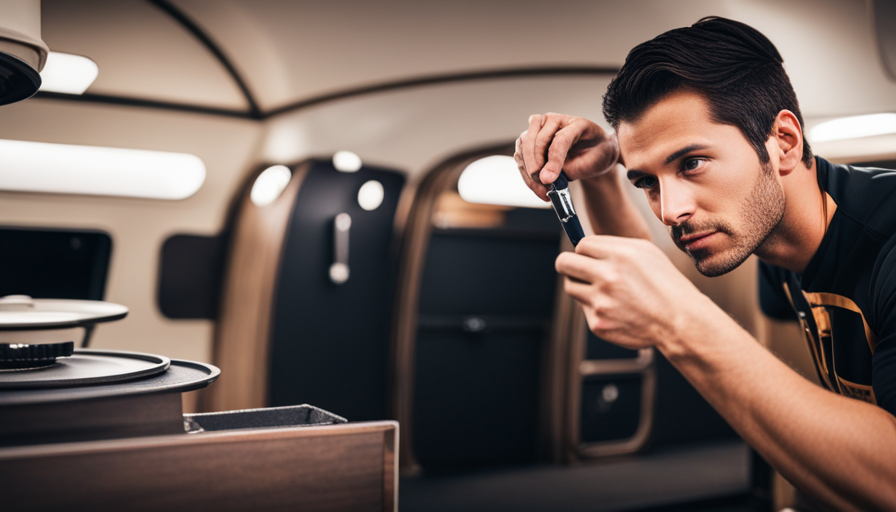
Were you aware that over 10 million Americans are owners of campers or RVs? It’s hardly surprising these vehicles have gained such popularity, offering the ability to journey and roam the vast outdoors while retaining the conveniences of home.
However, over time, the cabinets in your camper can start to look worn and outdated. The good news is that you don’t have to live with drab laminate cabinets any longer. In this article, I will share with you my detailed and professional knowledge on how to paint laminate camper cabinets.
By following these steps, you can give your camper a fresh and modern look without breaking the bank. From gathering the necessary materials to reattaching the cabinet hardware, I will guide you through each step of the process.
So, let’s get started and transform your camper into a stylish and inviting space you’ll love.
Key Takeaways
- Painting laminate camper cabinets can give your camper a fresh and modern look.
- Lighter colors can create a brighter and more spacious feel, while bold and vibrant hues can add personality and charm.
- Steps for painting laminate camper cabinets include cleaning the cabinets thoroughly, sanding the surface, applying a primer specifically designed for laminate surfaces, and choosing the right paint for laminate surfaces.
- Maintenance and care tips for painted cabinets include using mild cleaner and a soft cloth for cleaning, avoiding abrasive cleaners or scrub brushes, using coasters or placemats to prevent water rings and stains, and considering applying a clear topcoat or sealer for added protection.
Gather the Necessary Materials and Tools
Now you’re ready to gather all the materials and tools you’ll need to transform your laminate camper cabinets into a stunning masterpiece! Choosing the right paint color is crucial to achieving the desired look for your cabinets. Opt for a paint color that complements the overall theme and style of your camper.
Consider using lighter colors to create a brighter and more spacious feel, or go for bold and vibrant hues to add personality and charm.
When it comes to painting laminate surfaces, there are a few important tips to keep in mind. Firstly, ensure that the paint you choose is specifically formulated for laminate materials. This will ensure better adhesion and durability. Secondly, it’s essential to clean the cabinets thoroughly before painting. Use a mild detergent and warm water to remove any dirt, grease, or grime. Once the cabinets are clean, lightly sand the surface to create a rough texture that will help the paint adhere better.
With the right paint color and proper preparation, your laminate camper cabinets will be ready for a fresh new look. So let’s move on to the next step of prepping the cabinets by cleaning and sanding.
Prep the Cabinets by Cleaning and Sanding
To get started, first make sure you thoroughly clean and sand the cabinets to ensure a smooth and even surface. This step is crucial in prepping the cabinets for painting.
Here are some prepping techniques and the best cleaning products to use:
-
Use a gentle cleaner: Start by wiping down the cabinets with a mild soap and water solution. This will remove any dirt or grime on the surface.
-
Remove grease and stains: For tougher stains and grease buildup, use a degreaser or a solution of vinegar and water. These products will effectively remove any residue and prepare the cabinets for sanding.
-
Sand the surface: Next, use a fine-grit sandpaper to lightly sand the cabinets. This will create a rough surface that allows the primer to adhere better. Make sure to sand in the direction of the wood grain for a professional finish.
-
Clean up the dust: After sanding, use a tack cloth or a microfiber cloth to remove any dust or debris from the surface. This is important to ensure a clean and smooth paint application.
Now that the cabinets are clean and sanded, it’s time to apply a primer to ensure proper adhesion.
Apply a Primer to Ensure Proper Adhesion
Once you’ve thoroughly cleaned and sanded your cabinets, it’s essential that you apply a primer to guarantee optimal adhesion for your chosen paint color.
Primer serves as a crucial foundation that helps the paint adhere to the smooth surface of laminate cabinets.
To ensure a successful primer application, there are a few techniques you should keep in mind. First, make sure to use a high-quality primer specifically designed for laminate surfaces. This will ensure compatibility and enhance the overall durability of the paint job.
Additionally, it’s important to apply the primer evenly and in thin layers. This will prevent any drips or uneven texture from forming on the cabinets. I recommend using a high-quality brush or foam roller for a smooth and even application.
When choosing the right primer, look for one that is specifically formulated for laminate surfaces and offers excellent adhesion. Some primers even have stain-blocking properties, which can be beneficial if you’re covering up any existing discoloration or stains on your cabinets.
With the primer applied, you’re now ready to choose the right paint for your laminate surfaces and bring your cabinets to life with a fresh new color.
Choose the Right Paint for Laminate Surfaces
Don’t settle for just any paint, make sure you choose the perfect color that’ll transform your laminate surfaces into a stunning masterpiece. When it comes to painting laminate cabinets, it’s crucial to select the right paint that’ll adhere properly and provide long-lasting results.
There are various types of paint available for laminate surfaces, each with its own pros and cons.
One option is to use a latex or acrylic paint, which is water-based and easy to clean up. These types of paint are widely available and come in a wide range of colors. They also dry quickly and have low levels of odor. However, they may not adhere as well to laminate surfaces and may require multiple coats for full coverage.
Another option is to use an oil-based paint, which provides a durable and high-gloss finish. Oil-based paints have excellent adhesion properties and are less likely to chip or peel. However, they tend to have a strong odor and can take longer to dry.
Before painting, it’s important to test for adhesion. Simply apply a small amount of paint to an inconspicuous area and see if it sticks. If the paint easily peels off, you may need to sand the surface or use a primer.
In the next section, we’ll discuss how to use a brush or roller to apply the paint, ensuring a smooth and flawless finish.
Use a Brush or Roller to Apply the Paint
Using a brush or roller is the key to achieving a flawless and professional-looking finish on your laminate surfaces. When it comes to painting laminate camper cabinets, you have the option of using either a brush or a roller for application. Here are some tips to help you decide which method is best for you:
-
Brush application: Using a brush allows for more control and precision when painting. It’s ideal for smaller areas or detailed work, such as painting around edges and corners. Make sure to use smooth and even strokes to avoid streaks and brush marks.
-
Roller application: A roller is great for larger surfaces and can provide a more consistent coverage. It’s faster and more efficient, especially when painting flat sections of the cabinets. To avoid streaks, use a high-quality roller and apply the paint in thin, even coats.
-
Tips for avoiding streaks: Regardless of whether you choose a brush or roller, there are a few tips to help you avoid streaks. First, make sure to properly prepare the surface by cleaning and sanding it. Second, use a primer specifically designed for laminate surfaces to ensure good adhesion. Lastly, apply the paint in thin layers, allowing each coat to dry completely before applying the next.
By using a brush or roller and following these tips, you can achieve a smooth and streak-free finish on your laminate camper cabinets. In the next section, we’ll discuss the importance of applying multiple coats for a smooth and even finish.
Apply Multiple Coats for a Smooth and Even Finish
To achieve a flawless and professional-looking finish, it’s important to apply multiple coats for a smooth and even result. When painting laminate camper cabinets, it’s crucial to apply thin layers of paint rather than a thick coat. This ensures better adhesion and reduces the risk of drips or bubbles forming on the surface.
Applying thin coats also allows for quicker drying time, which is especially important when working with multiple layers.
After applying the first coat of paint, it’s necessary to sand the surface lightly before applying the next coat. This helps to smooth out any imperfections or brush marks, creating a more even finish. Sanding between coats also helps the subsequent layers of paint adhere better to the surface, resulting in a more durable and long-lasting finish.
By applying multiple coats and sanding between each layer, you can achieve a smooth and flawless finish on your camper cabinets. It’s important to allow sufficient drying time between coats to ensure that each layer sets properly before applying the next. This will help prevent any smudging or damage to the previous layers and ensure a professional-looking result.
Allow Sufficient Drying Time Between Coats
After applying multiple coats of paint to your laminate camper cabinets, it’s important to allow sufficient drying time between each coat. This step is crucial for achieving a smooth and even finish.
When it comes to drying techniques, here are three key points to keep in mind:
-
Patience is key: Rushing the drying process can lead to problems such as streaks, smudges, or even the paint peeling off. It’s essential to allow each coat to dry completely before applying the next one.
-
Follow the manufacturer’s instructions: Different types of paint may have specific drying times and conditions. Make sure to read and follow the instructions provided by the paint manufacturer to ensure the best results.
-
Consider environmental factors: Factors like humidity and temperature can affect the drying time of the paint. It’s advisable to paint in a well-ventilated area with controlled temperature and humidity levels to avoid any potential problems.
By following these drying techniques, you can ensure that each coat of paint dries properly and enhances the overall appearance of your camper cabinets.
Now, let’s move on to the next step: considering adding a protective top coat for durability.
Consider Adding a Protective Top Coat for Durability
For a long-lasting and durable finish, it’s worth considering adding a protective top coat to safeguard your newly transformed camper cabinet surfaces. Adding a protective top coat offers numerous benefits that will ensure your cabinets stay looking fresh and beautiful for years to come.
One of the main advantages is that it provides an extra layer of protection against daily wear and tear, such as scratches, stains, and moisture damage. This is especially important in a camper, where the cabinets are subjected to constant movement and exposure to various elements.
In addition to protecting your cabinets, a top coat can also enhance the overall appearance of the painted laminate. It can provide a glossy or satin finish, depending on your preference, giving your cabinets a professional and polished look. Furthermore, a top coat can help seal in the paint, preventing it from chipping or peeling over time.
While there are alternative cabinet finishes available, such as wax or varnish, a protective top coat is often the best choice for laminate cabinets. It’s specifically designed to adhere to smooth surfaces like laminate, ensuring a smooth and even finish. Additionally, it’s typically more durable and resistant to damage than other finishes.
By adding a protective top coat to your freshly painted laminate camper cabinets, you can enjoy the benefits of increased durability and a beautiful, long-lasting finish. Now that your cabinets are ready to withstand the test of time, let’s move on to the next step – reattaching the cabinet hardware and cleaning up.
Reattach the Cabinet Hardware and Clean Up
Now that you’ve transformed your cabinets into stunning works of art, it’s time to bring them back to life by reattaching the hardware and giving them a final clean up.
Reattaching the cabinet hardware is an essential step in the process of painting laminate camper cabinets. Not only does it provide functionality to your cabinets, but it also adds a finishing touch to the overall aesthetic. Make sure to use the appropriate tools and screws to secure the hardware in place.
Before reattaching the hardware, it’s important to clean up any excess paint or dust that may have accumulated during the painting process. Use a mild cleaner and a soft cloth to gently wipe down the surfaces of the cabinets, paying special attention to the areas around the hardware. This will help ensure a smooth and polished finish.
Cleaning techniques can vary depending on the type of hardware and the materials used in your cabinets. For metal hardware, you can use a mixture of warm water and mild dish soap. For plastic or ceramic hardware, a gentle cleaner or vinegar solution can be used. Avoid using abrasive cleaners or scrub brushes, as they may damage the painted surface.
Once the cabinets and hardware are clean and dry, you can step back and admire your newly painted laminate camper cabinets. The reattached hardware adds functionality and style, while the clean surfaces give a fresh and polished look.
Now, it’s time to enjoy your transformed space and make lasting memories in your camper.
Enjoy Your Newly Painted Laminate Camper Cabinets
Sit back and savor the beauty of your freshly transformed camper space with its stunningly painted laminate cabinets. The hard work and attention to detail you’ve put into painting them has paid off, and now it’s time to enjoy the fruits of your labor.
Here are some maintenance tips to keep your cabinets looking fresh and some creative ideas for decorating them:
Maintenance Tips:
- Regularly wipe down the cabinets with a soft cloth and mild soap to remove any dirt or dust.
- Avoid using abrasive cleaners or scrub brushes, as they can damage the painted surface.
- Use coasters or placemats to prevent water rings and stains from forming on the cabinet surfaces.
- Consider applying a clear topcoat or sealer to protect the paint and enhance its durability.
- Touch up any chips or scratches with matching paint to keep the cabinets looking flawless.
Creative Ideas for Decorating:
- Add decorative knobs or pulls to give your cabinets a personalized touch.
- Use adhesive wallpaper or contact paper to create a unique pattern or design on the cabinet doors.
- Display small plants or succulents on top of the cabinets for a touch of greenery.
- Hang lightweight artwork or photographs on the cabinet doors using removable adhesive hooks.
- Consider using removable decals or stickers to add a pop of color or a fun design element.
By following these maintenance tips and incorporating some creative ideas, you can ensure that your painted laminate camper cabinets continue to look fresh and stylish for years to come.
Frequently Asked Questions
Can I skip the step of cleaning and sanding the cabinets before painting?
Sure, I understand the desire to save time and effort, but I highly recommend against skipping the cleaning and sanding steps when painting laminate camper cabinets. Cleaning is important to remove any dirt, grease, or residue that could prevent the paint from adhering properly. Sanding is necessary to create a rough surface for the paint to grip onto. By skipping these steps, you risk paint peeling or not sticking at all, resulting in a less durable and professional-looking finish.
How long should I wait for the primer to dry before applying the paint?
The drying time for primer before applying paint depends on the specific product you’re using. Generally, it’s recommended to wait at least 24 hours for the primer to fully dry. However, it’s always best to refer to the instructions on the primer’s packaging for the most accurate drying time. Rushing the drying process can result in an uneven finish or paint that doesn’t adhere properly. Patience is key to achieving a professional-looking paint job.
What type of protective top coat should I use for laminate surfaces?
When it comes to choosing a protective top coat for laminate surfaces, there are several options to consider. One popular choice is polyurethane, which provides a durable and glossy finish.
Another option is an acrylic sealer, which offers good protection without altering the appearance of the laminate. However, it’s important to note that both options have their pros and cons.
Polyurethane may require multiple coats and can be more difficult to apply, while acrylic sealer may not provide as much durability. Ultimately, the choice depends on your specific needs and preferences.
Can I use spray paint instead of brushing or rolling the paint onto the cabinets?
Yes, you can use spray paint as an alternative to brushing or rolling the paint onto laminate cabinets. Spray painting offers several advantages, such as providing a smooth and even finish, reaching difficult-to-reach areas, and saving time. However, it’s important to note that spray painting requires more preparation, including proper ventilation and masking off surrounding areas. Additionally, it may be more difficult to achieve a thick and durable coat with spray paint compared to brushing or rolling.
How can I prevent brush strokes or roller marks from showing on the painted cabinets?
To prevent streaks and brush strokes from showing on painted cabinets, there are a few techniques you can try.
First, make sure to properly prepare the surface by cleaning and sanding it. This will help the paint adhere better and create a smoother finish.
Additionally, consider using a high-quality paint and a synthetic bristle brush or a foam roller. These tools can help minimize the appearance of brush strokes.
Another alternative painting method is using a paint sprayer, which can provide a more even and streak-free finish.
Conclusion
As I stood back and admired my newly painted laminate camper cabinets, I couldn’t help but feel a sense of accomplishment wash over me.
It was as if I had breathed new life into these tired old cabinets, transforming them into something beautiful and vibrant.
Just like the cabinets, we all have the power to reinvent ourselves and embrace change.
With a little patience and the right tools, anything is possible.
So go ahead, take that leap and paint your own journey of transformation.
Jason is the author of Laienhaft, a blog for all things outdoor and camping. If you’re looking for the best tent to take on your next camping trip, or need some advice on how to get started with recreational camping, Jason has you covered. He’s also an expert on survival skills – if you’re ever lost in the wilderness, he’s the guy you want to find!
Beginners Guides
How To Open Pop Up Camper Without Crank
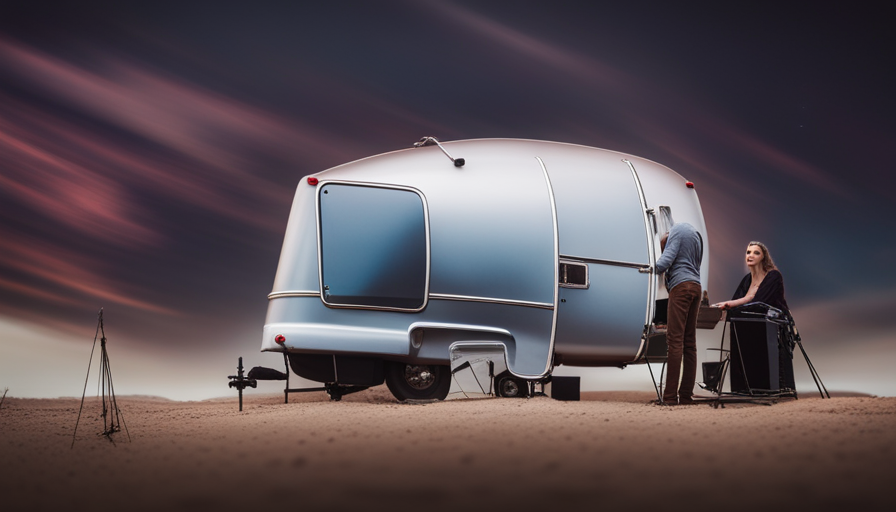
Ever been all set for your camping journey, only to discover that the crank for your pop-up camper has gone missing? No need to worry! I’m here to offer some crucial advice on how to deploy your pop-up camper without the need for a crank.
Whether you misplaced your crank or simply don’t have one, there are several alternative methods you can use to get your camper up and running. From utilizing basic tools like a socket wrench or screwdriver, to exploring manual override options or even contacting the manufacturer for assistance, I’ve got you covered.
If you’re feeling adventurous, you can even try using a power drill with the right attachment. And for those who prefer to leave it to the professionals, hiring a skilled technician is always an option.
So, let’s dive into the world of pop-up camper opening mechanisms and discover the perfect solution for you!
Key Takeaways
- Explore alternative methods if the crank is missing or malfunctioning
- Utilize a socket wrench or adjustable wrench to manually raise and lower the camper’s roof
- Look for a manual override option or emergency release mechanism near the roof or lift system
- Seek assistance from a campground or RV park
Check for a Spare Crank or Alternative Tool
Before you panic, take a moment to see if there’s a spare crank or any other tool that can help you open the pop-up camper without using the traditional method.
In emergency situations where the crank is missing or malfunctioning, it’s essential to explore alternative opening methods. Start by thoroughly inspecting the camper and its storage compartments for any hidden spare crank. Some campers might have a designated storage area for the crank, so make sure to check all possible locations.
If you don’t find a spare crank, don’t worry; there are still other tools you can use. One alternative method is to use a socket wrench or an adjustable wrench. These versatile tools can replace the crank and allow you to manually open the camper. Look for a socket or nut that fits the pop-up mechanism’s drive shaft. Attach the wrench securely and turn it counterclockwise to initiate the opening process. Be cautious while applying force to prevent any damage to the mechanism.
Now that you know how to check for a spare crank and use a socket wrench or adjustable wrench, let’s explore additional methods to open the pop-up camper without a crank.
Use a Socket Wrench or Adjustable Wrench
To easily access your camper’s interior, you can utilize a socket wrench or an adjustable wrench, which provides a quicker method than using a crank, saving you an average of 5 minutes. These tools can be used to manually raise and lower the camper’s roof, allowing you to set up or pack up your camper without the need for a crank.
When using a socket wrench or an adjustable wrench, it’s important to locate the crank mechanism on your camper. This mechanism is usually located on the front or back of the camper, near the roof. Once you have located it, you can insert the appropriate size socket or attach the adjustable wrench to the crank mechanism.
Using a wrench for alternative methods of opening a pop-up camper:
| Pros | Cons |
|---|---|
| Quicker method | Requires physical strength |
| No need for a crank | May require additional tools |
| DIY solution | May void warranty |
By using a socket wrench or an adjustable wrench, you can easily open your pop-up camper without a crank. However, if you still encounter difficulties or prefer to explore other options, you can try using a screwdriver or pliers. These alternative methods will be discussed in the subsequent section.
Try Using a Screwdriver or Pliers
If you’re feeling frustrated and in need of a quick solution, why not give using a screwdriver or pliers a shot?
While a crank is the usual tool for opening a pop-up camper, sometimes it’s not readily available. In such cases, improvisation is key. Using household items as makeshift tools can come in handy when you’re in a bind.
A screwdriver or pliers can be used to manually crank open the pop-up camper roof. Look for a point on the mechanism where you can insert the screwdriver or pliers and apply force to turn it. Be cautious not to damage any components or hurt yourself in the process.
If you’re unsure, seek help from fellow campers who may have experience with this type of situation. They might have some tips or tricks up their sleeves.
Ultimately, if all else fails, it’s always a good idea to look for a manual override option. This will allow you to bypass the usual mechanism and open the camper manually.
Look for a Manual Override Option
Look for an alternative method to access the manual override option for the pop-up camper’s roof mechanism. When trying to open a pop-up camper without a crank, it’s crucial to explore all possible options.
One of these options is to check for an emergency release mechanism. This mechanism is usually located near the roof or the lift system. By activating the emergency release, you can manually raise the roof of the camper.
In addition, it can be helpful to consult online forums for tips and advice from experienced campers who’ve encountered similar situations. These forums often contain valuable information and step-by-step instructions on how to open a pop-up camper without a crank. They may also provide helpful insights and troubleshooting techniques for common issues that arise during the process.
Moreover, it’s essential to remain calm and patient throughout the process. Opening a pop-up camper without a crank may require some physical effort and careful maneuvering. Therefore, it’s crucial to approach the task with caution and follow any safety guidelines provided by the manufacturer.
Transitioning into the subsequent section about using a power drill with an appropriate attachment, it’s important to consider alternative methods if the manual override option proves unsuccessful.
One such method involves using a power drill with a suitable attachment to manually raise the roof of the camper.
Use a Power Drill with an Appropriate Attachment
Once you’ve exhausted other options, grab your power drill and attach the appropriate tool, like a gear or socket, to manually elevate the roof of your pop-up camper, just as effortlessly as a hot knife slicing through butter. Using a power drill with the right attachment can be a game-changer when it comes to opening your pop-up camper without a crank.
To ensure a successful operation, it’s crucial to choose the correct power drill attachment. There are various options available, such as gear or socket attachments, specifically designed for manual elevation of the camper’s roof. These attachments allow you to utilize the power of your drill to effortlessly lift the roof, eliminating the need for a traditional crank mechanism.
To make it even easier for you, I’ve created a table below showcasing some popular power drill attachments and alternative tools you can use in case you don’t have access to a specific attachment:
| Power Drill Attachments | Alternative Tools |
|---|---|
| Gear Attachment | Wrench |
| Socket Attachment | Pliers |
| Screwdriver Attachment | Allen Key |
| Hex Bit Attachment | Adjustable Wrench |
| Wing Nut Attachment | Vice Grips |
With the right power drill attachment or alternative tool in hand, you’ll be able to open your pop-up camper with ease. However, if you find yourself struggling or uncomfortable with this method, it may be wise to seek assistance from a campground or RV park. They can provide guidance and support to ensure a safe and successful camper opening process.
Seek Assistance from a Campground or RV Park
When you’re feeling overwhelmed and unsure, don’t hesitate to reach out to a campground or RV park for assistance in navigating the process of elevating your camper roof. These professionals are experienced in handling various types of campers and can provide valuable guidance. Here are four reasons why seeking assistance from a campground or RV park can be beneficial:
-
Expertise: Campgrounds and RV parks often have staff members who are knowledgeable about pop up campers and can offer expert advice on how to open them without a crank. They’ve likely encountered similar situations before and can provide step-by-step instructions tailored to your specific camper model.
-
Equipment: These establishments are equipped with the necessary tools and equipment to handle camper-related tasks. They may have alternative methods or tools that can be used to open your pop up camper without a crank.
-
Networking: Campgrounds and RV parks are great places to meet fellow campers who may have experience with pop up campers. Seek assistance from a friend or family member who has experience with these campers. They can provide helpful tips and tricks based on their own experiences.
-
Online Resources: Explore online forums or social media groups dedicated to camping and RVing. These communities are filled with experienced campers who are often willing to share their knowledge and insights. You may find valuable tips and tricks on opening pop up campers without a crank.
By seeking assistance from a campground or RV park, you can gain the necessary knowledge and support to successfully open your pop up camper without a crank. However, if you still encounter difficulties, the next step is to contact the manufacturer for assistance.
Contact the Manufacturer for Assistance
To continue on our quest to open a pop-up camper without a crank, another option is to contact the manufacturer for assistance. As a first step, it is recommended to reach out to the customer service department of the camper’s manufacturer. They have the technical expertise and knowledge about their products, making them the best resource for troubleshooting common issues related to opening the camper. They can guide you through the process and provide detailed instructions tailored to your specific camper model.
To make it easier for you to understand, I have created a table with a two-column and three-row structure, which highlights the key points to consider when contacting the manufacturer for assistance:
| Key Points | Benefits |
|---|---|
| Reach out to customer service | Expert guidance from manufacturer |
| Explain the issue in detail | Tailored instructions for your camper |
| Provide camper model and serial number | Accurate troubleshooting and solutions |
By following these steps and effectively communicating with the manufacturer’s customer service, you can increase your chances of successfully opening the pop-up camper. However, if you prefer to leave it to the professionals, the next section will discuss how to hire a professional to open the camper without using a crank.
Hire a Professional to Open the Camper
If you’re not up for the challenge of tackling the camper on your own, why not consider hiring a pro to handle the opening for you? Hiring a handyman who specializes in camper repairs and maintenance can save you time and effort. Here are three reasons why hiring a professional is a great option:
-
Expertise: A professional has the knowledge and experience to open your pop-up camper safely and efficiently. They understand the mechanisms and can troubleshoot any issues that may arise during the process.
-
Proper Tools: Opening a pop-up camper without a crank requires specific tools and equipment. A professional handyman will have all the necessary tools to ensure a smooth opening without causing any damage to the camper.
-
Peace of Mind: By hiring a professional, you can have peace of mind knowing that the job will be done correctly. They’ll handle the task with precision, allowing you to relax and focus on other aspects of your camping trip.
If hiring a professional isn’t your preferred option, you can also learn how to DIY by watching tutorials or seeking guidance from experienced campers. However, it’s important to remember that proper technique and caution are crucial to avoid any accidents or damage during the opening process. Consider investing in a spare crank for future use to avoid any inconvenience in case the need arises again.
Invest in a Spare Crank for Future Use
Consider safeguarding your future camping adventures by having a backup key that unlocks endless possibilities for worry-free exploration. Investing in a maintenance kit for your pop-up camper is a smart move that ensures you’re always prepared.
These kits typically include a spare crank, along with other essential tools and replacement parts. By having a spare crank on hand, you can easily open your pop-up camper without needing a professional or relying on a manual crank.
In addition to investing in a maintenance kit, it’s also beneficial to find a local camper repair shop. These professionals can provide valuable advice and assistance in maintaining and repairing your pop-up camper. They can help you find the right spare crank for your specific model and offer guidance on how to properly use it.
By having a spare crank and a trusted repair shop in your arsenal, you can open your pop-up camper with ease whenever the need arises. This not only saves you time and money but also gives you the confidence to explore new destinations without worrying about how to open your camper.
Now, let’s explore alternative opening mechanisms for pop-up campers.
Explore Alternative Opening Mechanisms for Pop-Up Campers
Discovering new and innovative ways to effortlessly unfold your cozy home on wheels will undoubtedly enhance your camping experience. When it comes to opening a pop-up camper without a crank, there are alternative mechanisms that can make the process easier and more convenient. Here are three options to consider:
-
Hydraulic lift systems for pop-up campers: These systems use hydraulic power to raise and lower the camper’s roof. They’re typically operated by a switch or button, allowing for effortless and smooth operation. With a hydraulic lift system, you can easily open and close your pop-up camper with just the push of a button.
-
Electric motor options for opening pop-up campers: Another option is to install an electric motor that can assist in opening and closing the camper. These motors are typically controlled by a remote or a switch, providing convenience and ease of use. With an electric motor, you can eliminate the need for manual cranking and effortlessly open your pop-up camper.
-
Combination systems: Some pop-up campers come equipped with a combination of hydraulic lift systems and electric motors. This allows for even greater convenience and flexibility, as you can choose between using the hydraulic system or the electric motor, depending on your preference or the situation.
By exploring these alternative opening mechanisms, you can make the process of setting up your pop-up camper a breeze, ensuring a stress-free and enjoyable camping experience.
Frequently Asked Questions
How can I open a pop-up camper without a crank or alternative tool?
To open a pop-up camper without a crank or alternative tool, there are a few troubleshooting steps you can try.
First, check if there’s a manual override option on the camper’s lifting mechanism. If not, you may need to manually lift each corner of the camper by pushing up on the roof.
Be cautious and make sure the camper is securely locked in place before proceeding further. Remember, alternative methods should only be used as a last resort, and it’s always best to have the proper tools on hand.
What are some alternative opening mechanisms for pop-up campers?
When it comes to opening pop-up campers, there are some creative DIY solutions and innovative technologies available.
Some DIY solutions include using a winch system or modifying the camper’s existing mechanism. This requires some technical knowledge and skills.
On the other hand, there are innovative technologies like electric lift systems or hydraulic lifts that can be installed to effortlessly open the camper. These options provide convenience and ease of use for campers looking for alternative opening mechanisms.
Is it possible to use a power drill with an appropriate attachment to open a pop-up camper?
Yes, it’s possible to use a power drill with an appropriate attachment to open a pop-up camper. I once had a friend who used a power drill with a manual override option to effortlessly open his camper. It was like watching a well-oiled machine in action.
The drill attachment fit perfectly into the crank mechanism, allowing him to quickly and efficiently raise the camper’s roof. It was a game-changer for him, making the process much easier and saving him time and effort.
What should I do if I cannot find a manual override option on my pop-up camper?
If you can’t find a manual override option on your pop-up camper, there are alternative opening methods you can try. First, check if the camper has a power lift system that can be operated using a power drill with the appropriate attachment. If not, troubleshooting common issues may reveal the cause of the problem. This could include checking the battery, fuses, or wiring connections. It’s important to consult the camper’s manual or contact the manufacturer for specific guidance.
Are there any other options besides seeking assistance from a campground or RV park to open a pop-up camper?
Innovative DIY methods for opening a pop-up camper without assistance can be like navigating uncharted waters. While it may be tempting to take matters into your own hands, it’s essential to consider the potential risks and challenges involved.
Opening a pop-up camper without professional help requires careful planning and a thorough understanding of the camper’s mechanisms. Without proper knowledge, you may inadvertently cause damage or compromise your safety.
It’s always advisable to seek assistance from a campground or RV park for a smooth and worry-free camping experience.
Can I Pop Up a Camper Without Using the Crank?
Yes, there are pop up camper crank alternatives available for those who prefer a different method. With advancements in technology, some campers now come with electric lifts, eliminating the need for a crank. These alternatives make raising and lowering your camper much easier and more convenient, offering a hassle-free camping experience.
Conclusion
Well, it turns out opening a pop-up camper without a crank can be quite the adventure! From searching for spare tools to trying out alternative methods, there are plenty of ways to tackle this challenge.
Whether you opt for a socket wrench or even a power drill, there’s a solution for every DIY enthusiast. And if all else fails, don’t hesitate to reach out to the manufacturer or hire a professional.
Just remember, investing in a spare crank for future mishaps might be a wise move.
Happy camping!
Jason is the author of Laienhaft, a blog for all things outdoor and camping. If you’re looking for the best tent to take on your next camping trip, or need some advice on how to get started with recreational camping, Jason has you covered. He’s also an expert on survival skills – if you’re ever lost in the wilderness, he’s the guy you want to find!
-

 Beginners Guides2 months ago
Beginners Guides2 months agoLaienhaft Acquires aircooled-tv.com Domain to Add Focus on Aircooled Campervans
-

 Backpacker2 months ago
Backpacker2 months agoLaienhaft Acquires Infos-Campings.Com Domain – Our Joined Way Forward to Experience Outdoor, Camping, and Making Friends and Live the Experience
-

 Beginners Guides2 months ago
Beginners Guides2 months agoThe Guide to the Best Camping License Plate Ideas for Cars and RVs
-

 License Plate2 months ago
License Plate2 months agoTop 12 Unique & Funny Camping License Plate Ideas For Your RV, and Camping Van
-

 Beginners Guides3 months ago
Beginners Guides3 months agoHow To Build A Slide In Truck Camper
-

 Beginners Guides4 weeks ago
Beginners Guides4 weeks agoHow To Install A Camper Shell
-

 Beginners Guides2 months ago
Beginners Guides2 months agoWhy Does My Throat Hurt After Camping? The Most Common Reasons and How to Fix Them
-
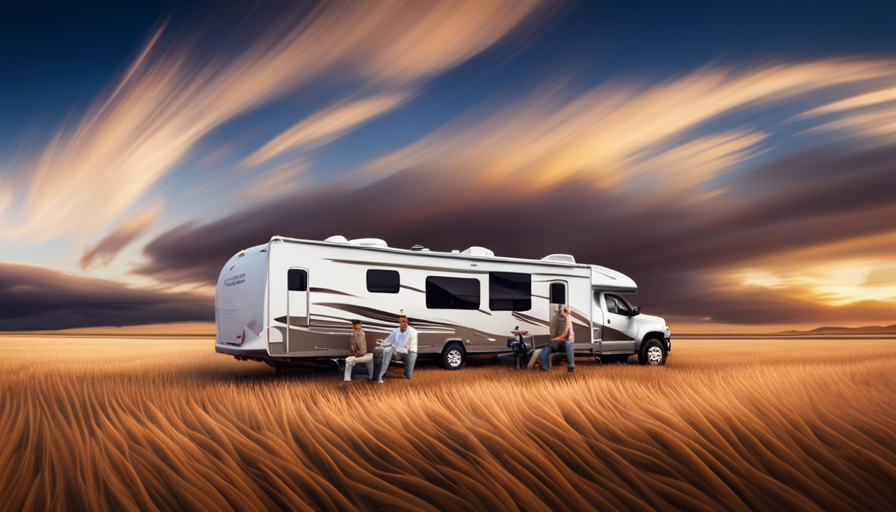
 Beginners Guides3 weeks ago
Beginners Guides3 weeks agoHow To Move A 5th Wheel Camper With A Tractor



